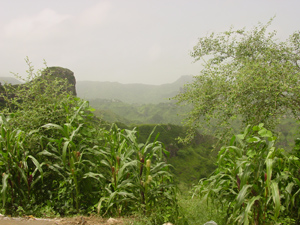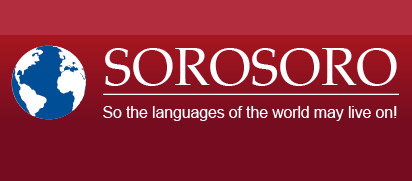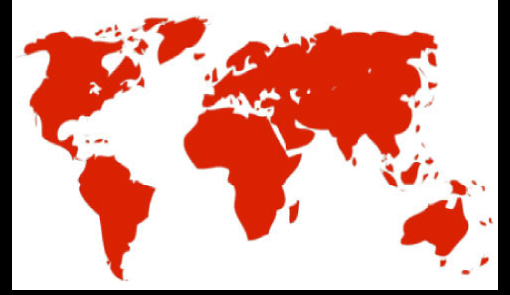Print  |
|


From West Africa to the Antilles, dynamic Portuguese Creoles
Posted by Nicolas Quint on September 8, 2011

Nicolas Quint is a Research Director in African linguistic at the CNRS (LLACAN lab – Speech, Languages and Cultures of Sub-Saharan Africa, INALCO/CNRS). He has been working on Afro-Portuguese Creoles (Cape Verdean, Casamance Creole and Papiamento) since 1995, and has produced dozens of publications on the subject.
From one side of the Atlantic to the other, lay a group of Portuguese-based Creoles that are present in three countries of West Africa (Cape Verde, Guinea-Bissau, and Senegal) and in the Netherlands Antilles. These Creoles are genetically related, in spite of the geographic distance, and they are known together as the UGC (Upper Guinea Creoles).
Which are these Creoles?
The UGC gather into three main groups:
Cape Verdean Creole, spoken as a mother tongue by about a million people across the planet, 500,000 of which in Cape Verde, and the rest of them in the diaspora. Cape Verdean itself divides into two dialectal groups: the Barlavento Creoles, spoken in the North islands of the Cape Verde archipelago, and the Sotavento Creoles, spoken in the South.
The Afro-Portuguese Creoles known as “continental”, that is:
– Guinea-Bissau Creole, main trade language of Guinea Bissau, with over a million speakers including at least 500,000 native speakers,
– Casamance Creole, spoken in the region of Ziguinchor, Senegal, by dozens of thousands of people,
– the Creole local dialects of the Petite Côte, in Senegal – Joal, Saly-Portudal, and Rufisque – nowadays all extinct.
Papiamento, an Afro-Iberian Creole spoken by some 300,000 people in the Netherlands Antilles (ABC Islands = Aruba, Bonaire, Curacao).

From western Africa to the Antilles, related Creoles
The linguistic proximity between Cape Verdean and the continental Creoles is so strong that mutual understanding remains essentially effective, especially between Cape Verdean of the South and Guinea-Bissau Creole.
As for contemporary Papiamento, although it involves now dominant Spanish elements, recent comparative studies have shown similarities with Cape Verdean and the continental Creoles that are so numerous and specific that there is no reasonable way of considering them to be coincidental.
Thus in all likelihood, these Creole do have a common origin, a Mother-language (West Africa Proto-Creole) which probably developed in the course of the 15th century in West Africa, with the first contacts between the Portuguese navigators and the African populations. The existence of this Mother-language is the only way of explaining the numerous points the UGC have in common, whether they be spoken in West Africa or in the Antilles.
Hence the word for dark/darkness is sukuru in Cape Verdean as well as in the continental Creoles, and sukú in Papiamento. These three forms are most likely to be explained by the existence of one and the same original form, SUKURU (at the West Africa Proto-Creole stage), deriving itself from Renaissance Portuguese escuro, dark.
What does the future hold for these Creoles?
Most of the UGC are fine nowadays:
– Cape Verdean and Papiamento are being massively handed down to the children of the areas they are spoken in. In both linguistic areas, Creole is the language of the street, bars, parties, it is the language which local music bands usually sing in – they do not seem endangered for the time being.
– Guinea Bissau Creole is expanding significantly, at the expense of the Atlantic and Mandaic African languages spoken over the country.
Casamance Creole faces a more alarming situation, however. It is still alive yet greatly rivalled by Wolof, Mandinka, and French.
Whatever their current situations are, all the UGC are under threat on the long term: outside Papiamento, widely used in the daily local press, these languages remain scarcely used in writing.
They’re also widely absent of education systems in the relevant areas, using other languages in education: Portuguese in Cape Verde, French in Senegal, and Dutch in the Netherlands Antilles.
In Cape Verde and Guinea-Bissau, where Portuguese is the official language, we’ve observed a growing incorporation of Portuguese elements into the local Creoles, which could eventually lead to a gradual takeover of these Creoles by the Portuguese language.
However, local authorities of the different countries tend to be ever-more openly taking the cultural reality of Creole into account: in Cape Verde, a formal spelling system was recently voted in Parliament, and the first master’s degree in Cape Verdean language was launched by the University of Cape Verde in the fall of 2010. On the Antillean side, in 2003, the government of Aruba granted Papiamento with an official status, on par with English and Dutch.
So many encouraging signs that herald a promising future for the Afro-Portuguese Creoles of West Africa…
◊
Learn more about Portuguese-based Creole languages on our website.
Read Bart Jacobs’ article “Papiamentu, healthy Creole”.








